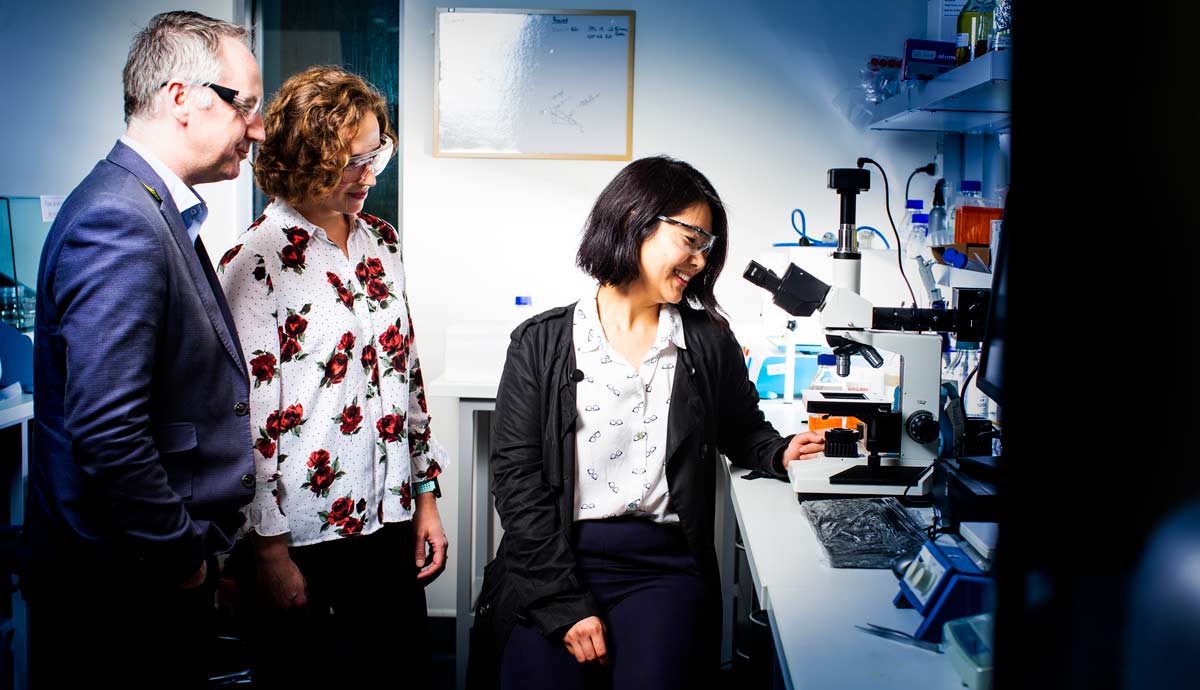January 22, 2019
‘Sticky’ water holds the key to antifouling surfaces
Insights make possible cheap, effective antifouling surfaces
Researchers have unlocked the mystery of what makes water bind to certain surfaces, with implications for creating cheap and effective antifouling solutions.
A team of researchers from the University of Wollongong (UOW) led ARC Research Hub for Australian Steel Manufacturing have been able to identify a previously unclear fundamental mechanism that inhibits surface fouling.
Effective antifouling strategies can reduce the build-up of organisms, such as bacteria, that degrade or contaminate a product, increasing maintenance and replacement costs.
A secondary challenge is developing coating systems that are cheap and simple to make in large quantitates and can be easily incorporated into manufacturing processes.
In work published recently in the journal ACS Nano, the researchers used colloidal silica, or small glass beads, that are added to a solution and mixed with other materials, such as polymers.
The addition of the glass beads can be used to modify the ability to attract or ‘stick’ to water.
Research Fellow Dr Paul Molino said the silica colloids have a surface chemistry that allows particles to bind to each other, forming a stable coating, while also interacting with water in a manner that inhibits micro-organisms from attaching and populating.
“We discovered that these silica colloids have remarkable, broad-ranging antifouling properties, with the ability to prevent adsorption of proteins, and attachment and colonisation of bacteria and micro-organisms,” Dr Molino said.
“They could help provide a simple, cheap and practical solution to producing antifouling systems, potentially on biomedical devices to prevent blood clotting, bacteria adhesion and possible infection, or for industrial applications.
A key part of the work was using advanced high-resolution imaging and modelling to unlock the secrets of how the bonding works.
They used atomic force microscopy to produce images of single particles on the surface to reveal the structure of layers and how they locked together.
Collaborative work with Professor Irene Yarovsky’s group at RMIT University in Melbourne predicted a strikingly similar structure using molecular dynamic simulations.
Project leader Associate Professor Michael Higgins said that rather than an ordered network of molecules across the surface, they found an unstable or moving layer of water. Micro-organisms like bacteria need food, water and a stable surface to grow.
Like the sands of the desert that are constantly shifting and preventing plants taking root, the hydration layer is active or constantly moving, making it much more difficult for micro-organisms to attach.
“Knowing the mechanism is important for ensuring the effectiveness of the system, such as preserving the critical antifouling characteristics when combined with other materials and when creating surfaces,” Professor Higgins said.
“In future, we may also be able to design colloidal silica that mimics the antifouling mechanism to produce a wider range of systems adaptable to different situations or environments.
“By applying a holistic approach that combines experimental work with theoretical modelling, we were able to explain how the molecular-level interfacial structures lead to exceptional antifouling ability of these kinds of fouling-resistant systems.
“As a result, the development of antifouling materials for a multitude of applications, including the modification of surfaces to prevent infection associated with implantable medical devices, or the build-up of slime layers on ships/recreational boats, is significantly advanced.”
